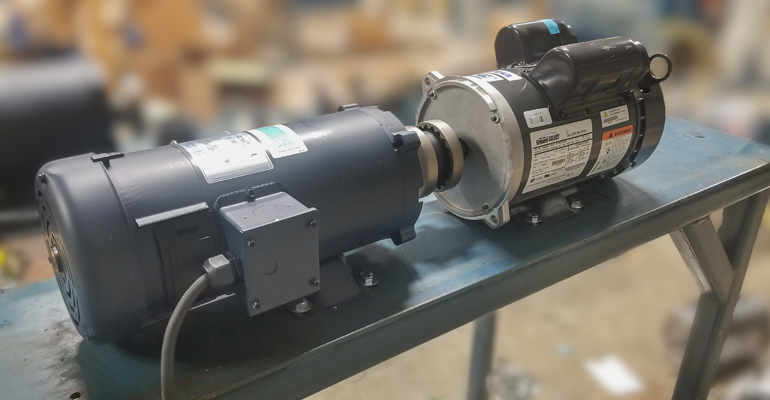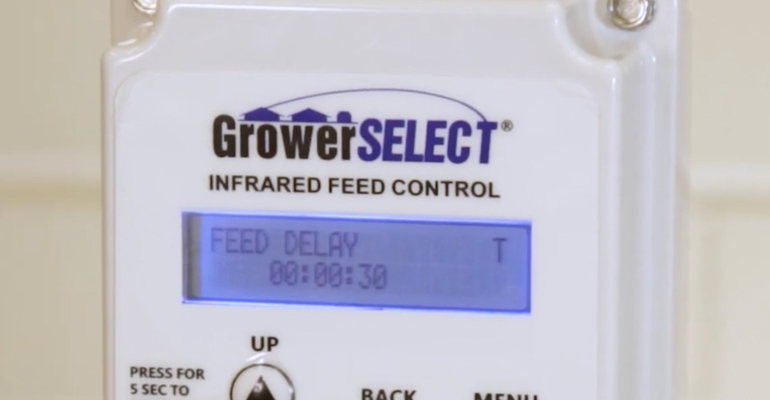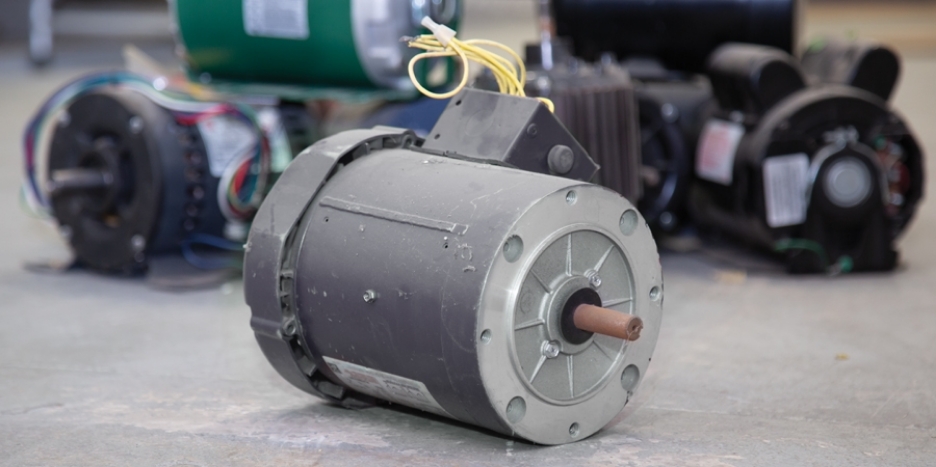Starting a motor requires more energy compared to running it continuously, resulting in the generation of additional heat. Typically, this excess heat dissipates when the motor is idle or by the cooling fan while it is running. Short cycling refers to a motor's frequent starting and stopping in short intervals. Repeated on-off cycles cause heat to accumulate inside the motor.
Heat kills motors.
As a rule of thumb, every motor should have at least a 30-second delay between starts. A longer pause is better, but 30 seconds should be considered the minimum.
 |
| Bench set-up to test motor start cycles |
To emphasize the significance of the off time, Hog Slat's engineering department conducted a targeted simulation, varying the off times. In the first part of the experiment, a motor was switched on for two seconds, turned off for eight seconds, and then switched on again. This motor failed after 8,000 starts. Even with a short two-second run time, the additional heat buildup caused damage to the motor.
Next, another motor was switched on for two seconds and allowed to remain off for 30 seconds before being restarted. This motor has cycled over 130,000 times without failing.
How much extra heat?
The temperature rise resulting from short cycling is substantial. In the first example, the motor's case temperature measured close to 240 degrees F. In contrast, with the 30-second delay, the case temperature only reached 140 degrees F. Interestingly, the motors' casing temperature was 120 degrees F. while running due to the cooling fan effectively dissipating the heat.
There are two areas we typically see problems with short cycling on livestock or poultry farms... auger motors and minimum ventilation fans operated by a timer.
 |
| GrowerSELECT feed line control with adjustable motor delay |
Motor short-cycling became more of an issue as the industry replaced paddle-type switches with proximity switches. Paddle switches tend to have a slower activation time, as the feed level can drop and refill several inches before the micro switch engages. Because proxy sensors are more sensitive, they switch off and on quicker as the feed level fluctuates.
Most of the newer infrared feed line controls, like the GrowerSELECT HS820, have a minimum delay feature built in. Older controls with a paddle or proximity switch may need to add delay relay kits like the GrowerSELECT HS598 (with internal relay) or HS617 (without internal relay) to the drive unit control.
Ensuring an adequate off time can be challenging for minimum winter fans as the animals mature and require increased airflow. Nevertheless, the objective should remain to allow at least 30 seconds of off time to prevent motor damage.
Often farms experiencing higher-than-average rates of motor replacements can attribute the cause to motors overheating for various reasons. Addressing the impact of short cycling on electric motors enables producers to make informed decisions that can significantly reduce motor failures.












 Україна
Україна Méjico
Méjico



